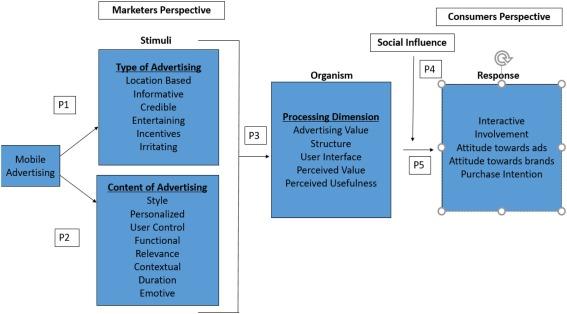How Mindfulness is Transforming Education: Benefits and Strategies for success
In today’s fast-paced world, the classroom is evolving beyond traditional teaching methods. One of the most impactful trends making waves in schools is mindfulness in education.Educators and students alike are discovering that mindful practices not only reduce stress but also foster emotional intelligence,boost academic performance,and create a positive learning surroundings. But what exactly is mindfulness, and how can it transform education? Read on as we explore the wide-reaching benefits, proven strategies, and real-life success stories surrounding mindfulness in schools.
Understanding Mindfulness in Education
Mindfulness is the practice of being present and fully engaged in the moment, acknowledging one’s thoughts and feelings without judgment. In education, mindfulness is introduced through activities that promote awareness, attention, and self-regulation. These might include breathing exercises, guided meditation, mindful movement, and reflective journaling.
- Mindfulness programs in schools are designed to help students manage stress,improve focus,and develop resilience.
- Teachers use mindfulness-based classroom activities to create a more inclusive and supportive learning environment.
Key Benefits of Mindfulness in Education
1. Improved Academic Performance
- Mindfulness techniques help enhance student concentration and memory retention.
- Students who practice mindfulness are better equipped to manage test anxiety and complex assignments.
2.emotional and Social Benefits
- Mindfulness promotes emotional regulation, reducing disruptive behavior and boosting empathy.
- Students learn to respond thoughtfully to challenges, fostering positive relationships with peers and teachers.
3. Reduced Stress and Anxiety
- Mindful breathing and relaxation exercises lower cortisol levels, the hormone responsible for stress.
- Regular mindfulness practice reduces symptoms of anxiety, making school a safer space for all learners.
4. Enhanced Teacher Well-Being
- teachers benefit from mindfulness training, experiencing lower burnout rates and greater job satisfaction.
- Mindful teachers create nurturing classrooms that facilitate academic achievement and holistic development.
How to Incorporate Mindfulness into Classrooms: Strategies for Success
Implementing mindfulness in education doesn’t require overhauling the curriculum. Here are practical, proven strategies that educators can use to seamlessly introduce mindfulness in classrooms:
Start with simple Mindful Moments
- Begin each day or lesson with a brief mindful breathing exercise.Just 2 minutes of deep breathing can recalibrate focus and set a calm tone.
Integrate Mindful Movement
- Introduce gentle stretches or yoga poses during classroom breaks to encourage students to listen to their bodies and self-regulate energy.
Practice Gratitude Journaling
- Dedicate a few minutes each week for students to jot down things they’re grateful for. Gratitude boosts mood and creates a positive classroom culture.
Mindful Listening Exercises
- Encourage students to listen actively to their peers by practicing nonverbal cues and paraphrasing during discussions.
Use Guided Meditations
- Leverage audio resources or mobile apps to lead short guided mindfulness sessions designed for kids or teens.
Train Teachers in mindfulness
- Support professional development with mindfulness training workshops, equipping educators with tools to manage stress and classroom challenges.
Create Mindful Spaces
- Designate a quiet corner where students can take a mindful moment whenever they feel overwhelmed or distracted.
Case Studies: Mindfulness Making a Difference
oak Park Elementary School, California
After implementing daily mindfulness activities, oak Park Elementary saw a 30% decrease in disciplinary referrals within one semester. Teachers reported improved classroom harmony, and students expressed greater self-confidence in group projects.
Evidence from KIPP Charter Schools, New York
KIPP schools incorporated mindful minutes into their routine. Standardized test scores improved, especially in reading and math, attributed to students’ increased focus and reduced test anxiety. The schools also reported higher levels of engagement and attendance.
Teacher’s First-Hand Experience: Mindfulness Benefits
“Before bringing mindfulness into my fifth-grade class, students often struggled with frustration and emotional outbursts. Now, we begin our mornings with a 5-minute breathing exercise. I’ve noticed fewer conflicts, greater cooperation, and even parents commenting on their children’s improved ability to handle stress at home,” shares Ms. Linda Wu, a public school educator in Seattle.
Practical Tips to Sustain Mindful Practices in Education
- Be consistent: Practice mindfulness regularly, even if it’s brief, to help students form lasting habits.
- Get creative: Adapt exercises to fit classroom dynamics—whether it’s group breathing, personal journaling, or movement breaks.
- Invite feedback: Encourage students to share their experiences and suggestions to refine mindfulness routines.
- Harness technology: Use mindfulness apps, guided audio, and online resources for accessible, engaging content.
- Involve parents: Communicate with families about classroom mindfulness initiatives and suggest simple at-home activities.
- Measure impact: Track changes in behavior, academic performance, and attendance to demonstrate mindfulness effectiveness.
Common Challenges and Solutions
- Challenge: Skepticism from staff or students.
- Solution: Share research, case studies, and start with short, non-intrusive practices to build familiarity and support.
- Challenge: Limited instruction time.
- Solution: Integrate brief mindfulness exercises into transitions or existing routines without disrupting the schedule.
- Challenge: Diverse classroom needs.
- Solution: offer a variety of mindfulness activities so students can choose what works best for them.
Mindfulness Resources for Educators
- Mindful schools – offers curricula, online courses, and research for teachers.
- Headspace for Educators – Mindfulness app resources tailored for students and teachers.
- Calm Moment – Blog and activities for integrating mindfulness practices.
Conclusion: The Future of Mindfulness in Education
As research continues to support its impact, mindfulness in education is reshaping how we approach learning and emotional wellness in schools. By fostering self-awareness, emotional balance, and focused attention, mindfulness equips both students and teachers to thrive academically and personally. Whether you’re an educator, administrator, or parent, introducing mindfulness can create resilient kids, harmonious classrooms, and a brighter future for education. start with small steps, remain open to feedback, and witness the positive change firsthand.
Ready to transform your classroom? Begin your journey today with simple mindfulness activities—and help foster happier, healthier, and more successful learners.

